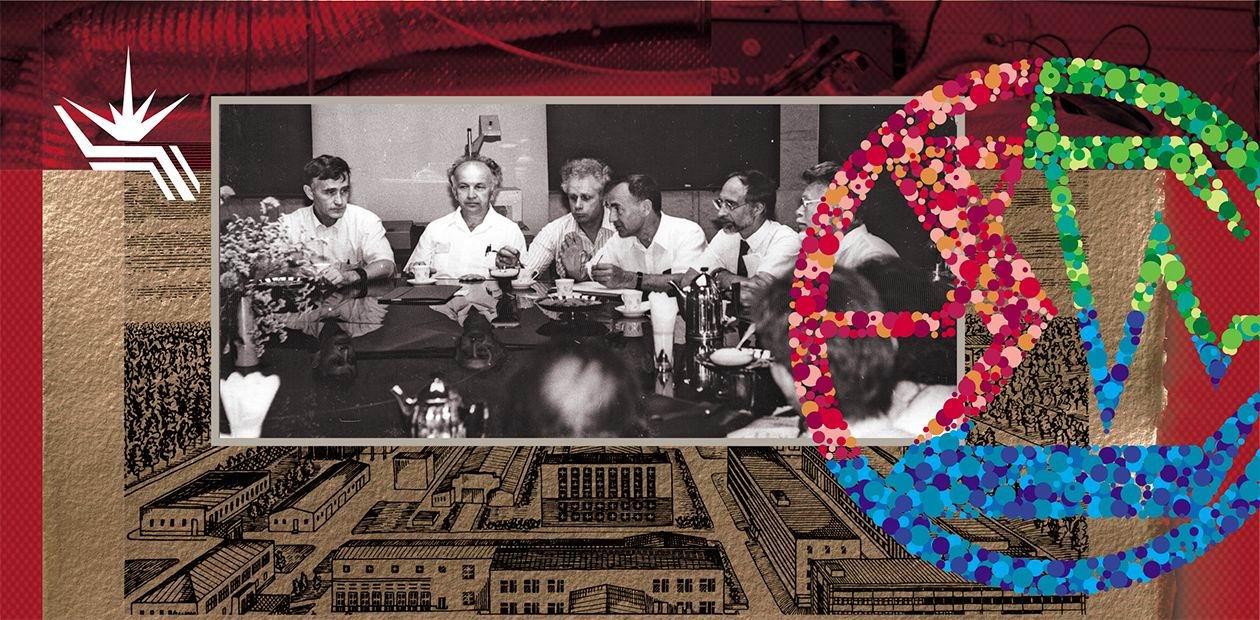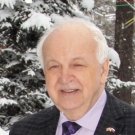Akademgorodok: A Meeting Point
Akademgorodok once brought together most outstanding scientists, who created their own scientific schools and raised their “kids” and “grandkids.” Therefore, the concentration of opportunity to meet with unique personalities here ran sky-high.
At that time, everyone wanted to visit Akademgorodok. Many of the meetings took place at the Institute of Nuclear Physics (INP). The traditional round tables at the INP gathered not only scientists but also writers, artists, film directors, poets. The INP round table served as a symbol of democracy—independent judgment with a cup of coffee. Alexander Solzhenitsyn, Evgeny Evtushenko, Bulat Okudzhava—all of them sat at our round table...
In this life, it is mighty important to be in the right place at the right time. I was lucky: I happened to be in the right place – in Akademgorodok, at the Institute of Nuclear Physics – at the right time, when the institute had just launched one of the first colliding beam accelerators VEP‑1, and with the right people – at Alexander Skrinsky’s laboratory. It was an apposite coincidence of time, place, and people.
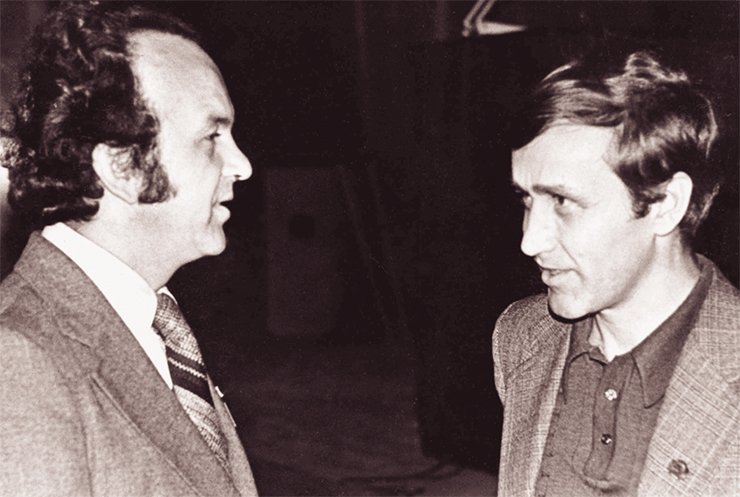
I graduated from Novosibirsk Electrotechnical Institute (NETI) in 1963. We knew as little about the Institute of Nuclear Physics as we did about Akademgorodok itself. Nevertheless, after my fourth year of studies, in the summer of 1962, I and four other students went to an interview at the INP. Three people came to see us: Alexander Skrinsky, Veniamin Sidorov, and Oleg Nezhevenko, a NETI graduate of 1961, who told us about the institute in the first place and suggested we should come. We had a talk in one of the rooms, beginning with technical questions, and then someone asked me why I, with my major in electronic instruments, wanted to work at the INP. I mustered courage and said, “Listen, nuclear physics is utterly impossible without the achievements of electronic technology.”
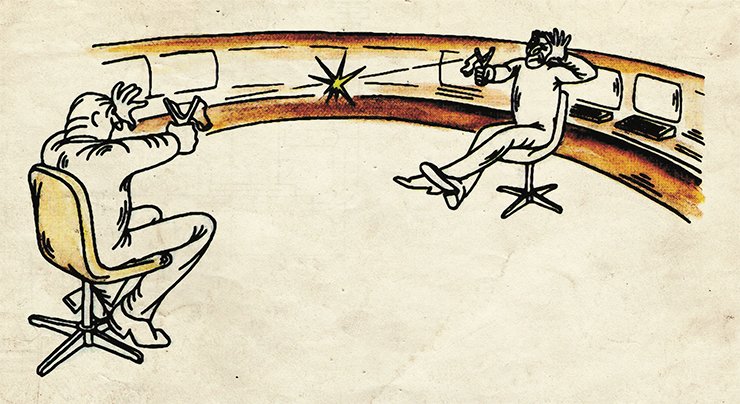
All the five of us were accepted. I happened to take my practical training at Skrinsky’s laboratory, wrote a degree thesis, and, after I received my degree, in September 1963, I began working at the institute.
The key element was Budker
“Budker’s school would have lost much without the personal charm of its founder. He endeared himself instantly, at the first meeting. He easily attracted people. I doubt that it was his smarts alone. He charmed people by his unexpected thinking, beautiful speech, instant response to a thought or joke. In my opinion, he was as good in humanities as he was in physics. I heard one of his impromptus at a meeting with foreign journalists. Someone asked what it was like to live in Russia… for half-breeds. The question was strange for that time and had some vague hint to it. Budker responded instantly, saying, ‘Not every Métis is a Matisse.’ Everyone laughed, and the question passed us by”The INP has always been an independent democratic venue, but not politically. When a scientist becomes involved in politics, nothing good comes from it. When the whole institute becomes involved, it is a sure death for the organization. However, the freedom of scientific creativity, freedom of discussion, freedom of scientific ideas – this is the INP’s style, which has persisted till this day. Andrei Mikhailovich Budker started a wonderful tradition to hold scientific councils at a round table. The councils met without a prior approved agenda. At first, these were general meetings for all the staff of the institute, where everyone could take part in the discussion and present their research. As the staff grew bigger, a grand council appeared, which gathered laboratory and department heads and administration, while young researchers met at sectional councils. The latter focused, as a rule, on issues within thematic areas, such as accelerator physics, plasma physics, elementary particles, or synchrotron radiation. Budker always said that he needed to see the eyes of the young and understand the response of young researchers to his words. At these councils Andrei Mikhailovich often “preached sermons.” He walked around the table and spoke, for instance, about teacher-student relations or the relationship between fundamental and applied sciences, another age-old question he put a lot of thought into.
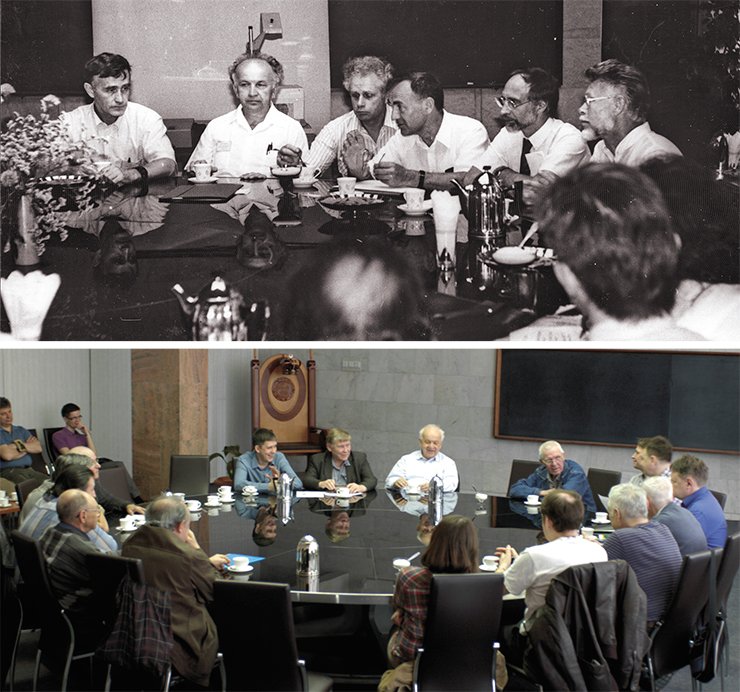
“Studying only by textbooks, monographs, and articles is like trying to master the secrets of the pianist’s art from a teach-yourself book. <…> The same with science: without a good school, one cannot master the secrets of research craftsmanship. It is no accident that good physicists are born where there is a good school…”
This tradition is still alive. Of course, today the scientific secretary sometimes e-mails us the agenda of the meeting – bureaucratic elements penetrate into the life of scientists too. However, the round tables with their freedom of speech and shiny coffee pots with freshly brewed coffee, all this remains unchanged.
G. N. Kulipanov: “It is generally believed that a teacher is someone older than you. Yes, the first people who instilled in me a love of knowledge were my school teachers: M. I. Golov, my teacher of mathematics, and M. T. Migasov, my teacher of literature. My teachers at the INP were Alexander N. Skrinsky and Boris V. Chirikov. However, mature age is not a necessary attribute of a teacher. When I came to work at the VEP‑3 facility, there was a great team of young scientists: N. A. Vinokurov, E. A. Perevedentsev, N. A. Mezentsev. I was lucky again to be at the right time in the right place, next to the right people. To learn from young people, especially talented ones, is a completely different learning experience, but it really is a learning experience”Good coffee has always been a necessary element of the INP round tables; we were very sensitive about it. Even when we could not find good coffee in Novosibirsk, everyone who went on a business trip to Moscow came over to a coffee shop in Kirov Street (now Myasnitskaya Street): what smells there were! We bought coffee beans and brought them to Novosibirsk; here we ground them and brew coffee. But those were just appearances, the key element was always Andrei Mikhailovich Budker – he set the tone of scientific discussions, creating an atmosphere of independence and freedom.
Everything that Budker did was filled with his personal philosophy. Even the jokes he liked to tell so much were not just funny but had a philosophical overtone. Andrei Mikhailovich was a great laugher and managed to bounce back with a smile from most awkward moments.
Guests of the INP
In the 1970s, we began to develop a new area of research at the INP, focusing on different ways of generation and use of synchrotron radiation. We looked for how to obtain very intensive beams of Mössbauer quanta using synchrotron radiation. We named the scheme nuclear Bragg monochromatization of beams and started experiments. Amidst that, I got a call from Academician Goldansky, the chairman of the synchrotron radiation commission of the USSR Academy of Sciences and an old friend of Rudolf Mössbauer. He said to me over the phone, “Gena, Mössbauer is coming over (he was already an Honorary Academician of the USSR Academy of Sciences) to Russia and he wants to go to Novosibirsk and visit the INP.”
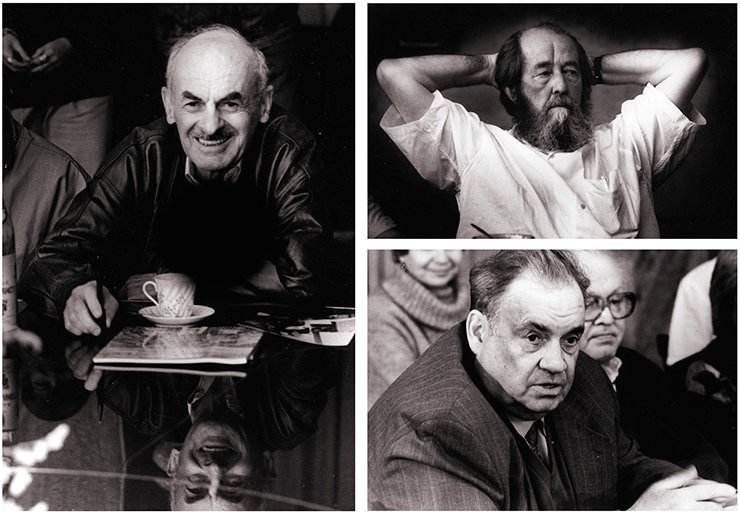
B. Sh. Okudzhava: “Nonetheless, the psychology of independent thinkers was distorted differently. For example, a major on TV says, ‘I belong to intelligentsia because I’m a major.’ This is a very Bolshevik approach: If I’m wearing glasses and a hat, and even have a degree, I’m a member of intelligentsia. But I met intelligent people among laborers and vulgar ones among Academicians.
“Until we learn to define what freedom is, what intelligentsia is, until we see the difference between freedom and will and understand what democracy is, we will be an uncivil society”
A. I. Solzhenitsyn: “…Of course, time does not spare us, and our lives won’t be long. One can only wonder how people in many places, like your institute, still manage to keep going. What have we turned into on the national scale, having lost twenty-five million people and not caring about this loss? At many meetings I heard, ‘Oh, why did we start this perestroika? Everything was okay, more or less.” But now we have to pay for many things at once.
“Our country went through an incredible psychological shock leading to a total destruction of concepts about how to live and what to do in 1930—1931. It was a blow that completely crushed the people’s psyche, especially the intelligentsia. It was impossible to get through this poisoned zone; there was no hope. Many people experience this now, believing it’s a unique case. No, it’s not unique. It happens in the life of individuals, individual families, and, sometimes, individual nations that they get into so uncomfortable, adverse – words can hardly describe it – tense, impossible conditions that they must go through if they still live. One needs to find in oneself a source of emotional strength and resilience, and although science may suffer, but it has a lot of resilience, unlike in other places, where there is no strength to endure hardships. A very grave condition – it goes without saying”
“A sincere and direct person, Eldar Ryazanov endeared everyone to himself from the very first minutes, when he said that he felt very uneasy in that room because he didn’t know physics at all. When he went to school – this was the war years – there were simply no teachers of physics: his school-leaving certificate states N/A for this subject. This confession evoked compassion in the hearts of our physicists and immediately created a friendly and relaxed atmosphere. The INP Deputy Director Veniamin Sidorov made a traditional speech about the INP history and rules, about its fight for survival; our guest listened to him with sincere interest, and his unexpected questions cheered up the audience, who burst with approving laughter. So, Eldar Ryazanov asked whether it was possible to neutralize hazardous politicians, like hazardous beetles, with the help of our industrial accelerators. The INP physicists had to admit that they had not yet thought about such an application of their products”
We received the guest, showed him the institute, and then I drove him to Novosibirsk Opera and Ballet Theater. On the way, I told him about the Trans-Siberian Railway and how it changed our city; I also told him how World War I, the revolution, and World War II influenced the development of Novosibirsk. Here I added that the theater we were heading to was built during World War II, and the first opera premiered on May 13, 1945. Here Mössbauer rounded his eyes and asked in amazement: “You (Russians) were so sure you would win that war that you built a theater instead of tanks and aircraft?” This story about the construction of the theater got him so deep under the skin that during his entire stay at us, he kept telling it to everyone, when he gave a lecture at NSU, when he raised a toast at a dinner party, etc.
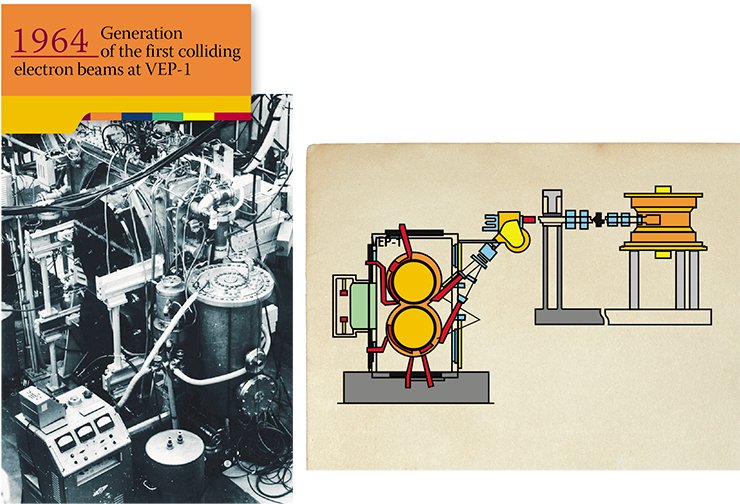
The story of my acquaintance with the Nobel laureate and his acquaintance with Novosibirsk Opera and Ballet Theater had a continuation. But for the theater itself.
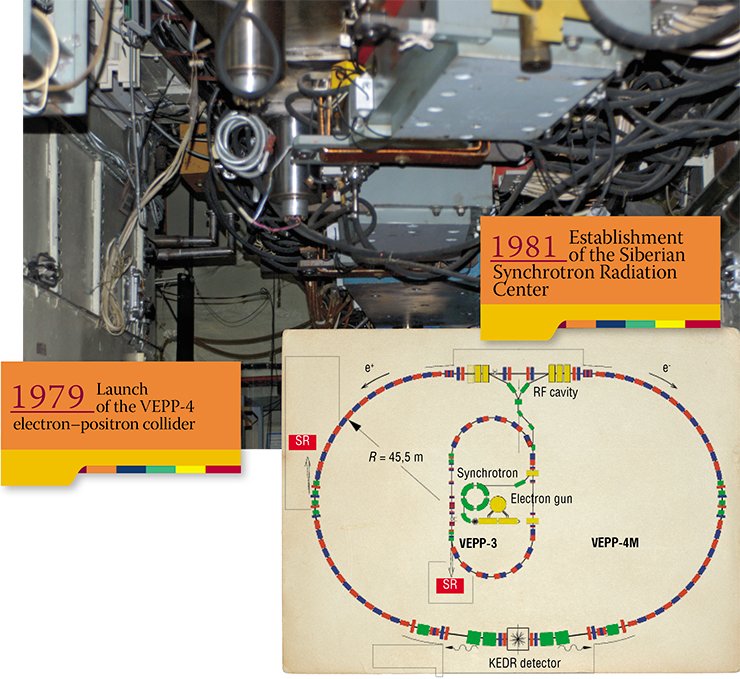
In 2003, Prime Minister Mikhail Kasyanov visited Novosibirsk. Our governor Viktor Tolokonsky had hopes about this visit, that he would obtain additional money for the restoration of the Opera and Ballet Theater. After visiting the theater, Tolokonsky brought Kasyanov to Akademgorodok. On the way through the forest from the Exhibition Center to Dom Uchenykh (‘House of Scientists’), I told Kasyanov the story about the German scientist and his impressions. Then I said, “Mikhail Mikhailovich, how is it possible that today, when the situation in the country is not as catastrophic as during the war, the government cannot find money to restore our theater?” In the Concert Hall of Dom Uchenykh, I sat next to the Minister of Culture Mikhail Shvydkoy; he thanked me for telling that story at the right time, adding that he was confident in receiving the money. And Novosibirsk indeed got the funding to restore the theater.
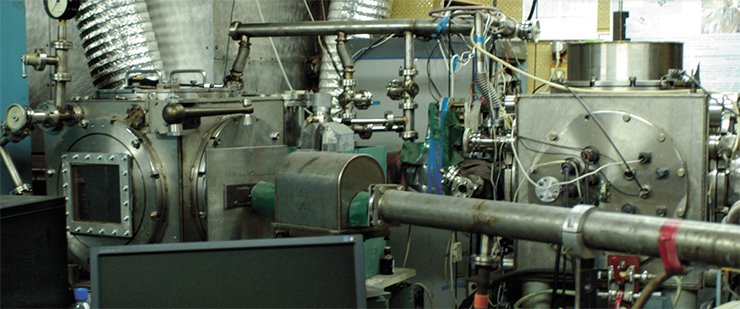
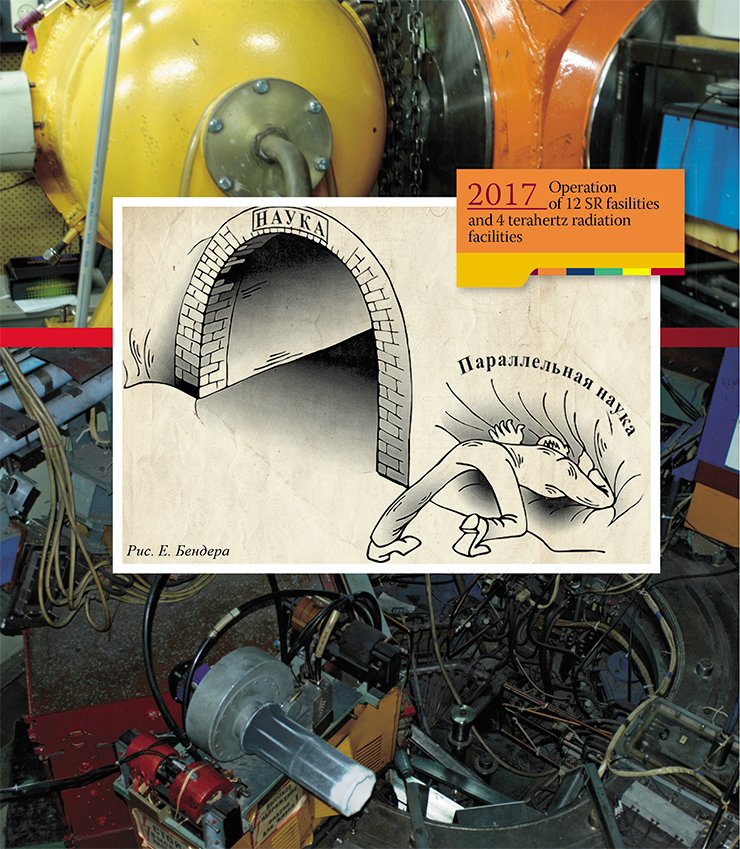
However, the INP in the SR world is not just a participant: the Institute is also an active developer. The INP is practically a monopolist in producing superconducting wigglers (multipolar magnets generating a sign-variable periodic magnetic field), which are installed in rectilinear spaces of electron storage rings to increase radiation intensity. Novosibirsk physicists and engineers control the whole production cycle of these complex devices: from designing and manufacturing to testing and assembly on site. All over the world, from Australia to Brazil and North America, more than 20 wigglers made in Novosibirsk are currently in use. The INP researchers have developed, produced, and installed superconducting devices practically in all world SR centers, including Spring‑8 (Japan), ELETTRA (Italy), CLS (Canada), synchrotrons in Brazil and Australia, and the only Russian specialized SR source at the Kurchatov Institute in Moscow.
At present, the research group dealing with wigglers is engaged in producing undulators, i. e. superconducting devices with a large number of poles and a low magnetic field. In contrast to wigglers, in undulators the radiation from separate poles is coherent, which provides monochromatic radiation with a substantially higher spectral brightness. All modern centers are interested in these devices. For instance, there is a tentative agreement on collaboration in this field with DLS (United Kingdom)
On June 28, 1994, Nobel laureate Alexander Solzhenitsyn paid a visit to the INP. The writer was on his way from the United States, traveling along the Trans-Siberian Railway, making stops in every big city. We had a long round table discussion at the institute, talking about science, education, about Russia. I asked Solzhenitsyn why he decided to visit China. Could it be that he wanted to compare the Chinese version of the reforms with the Russian one? I also mentioned the social law stating that it was impossible to simultaneously reform the political and economic structures because, in my opinion, such a reform would cause feedbacks that would destroy both systems. Solzhenitsyn said, “I wanted to see with my own eyes a piece of China, especially in comparison with Blagoveshchensk. Apparently, the city opposite Blagoveshchensk is growing fast economically. As for the social law you mentioned, I’m afraid it’s true. No matter how much we want to get rid of our old system, it probably would be wiser to start with reforming the economy alone. This issue rose up as far back as in 1946—1947, in prison discussions, which I attended as a young officer. Back then, we all knew that communism would fail. In those discussions, we focused on how to get out of it. Wise people with life experience said, ‘We need to revive only the economy, without shattering all this terrible, ridiculous, reckless system. We need to start from the bottom, through small plots of land, small workshops, small stores so that people could get enough food and clothes, recover their health; then they would gradually revitalize the system from the bottom up.’ We had no one to give this advice to. The ones who said those words have long passed away. I have remembered this advice and ascertained over time that it was right.”
Science works out in different ways
On December 1, 1981, the Siberian Center for Synchrotron Radiation was organized in order to coordinate the efforts directed to developing SR studies, using SR sources efficiently, and improving the quality of research. The center was based on the acceleration equipment and laboratories of the Budker Institute of Nuclear Physics SB RAS. In 1991, it was reorganized into the Siberian International Center for Synchrotron Radiation, an open laboratory for Russian and foreign organizations and individuals. In 2003, the first line of a free electron laser was put in operation. In 2005, the Center was renamed the Siberian Center for Synchrotron and Terahertz RadiationAn ingenious inventor, Budker could come up with utterly unique solutions, such as open traps for thermonuclear reactor or a stabilized beam. However, his crazy and ambitious ideas, for example, a linear collider, did not give results immediately. Projects lasted for years. Budker understood that well and insisted that the institute should do applied research, for example, the construction of industrial accelerators. He invested in these projects and forced each laboratory to think about applied research because without it, there would be no institute. The government funding was 20 % of the institute’s budget; the rest was contracts. Under Budker, those were contracts for the Soviet defense industry; then we began to work for foreign customers (there was a time when foreign contracts were the main source of funding, making 75 % of the budget). The current situation is as follows: 25 % comes from foreign contracts; 75 % from Russian ones.
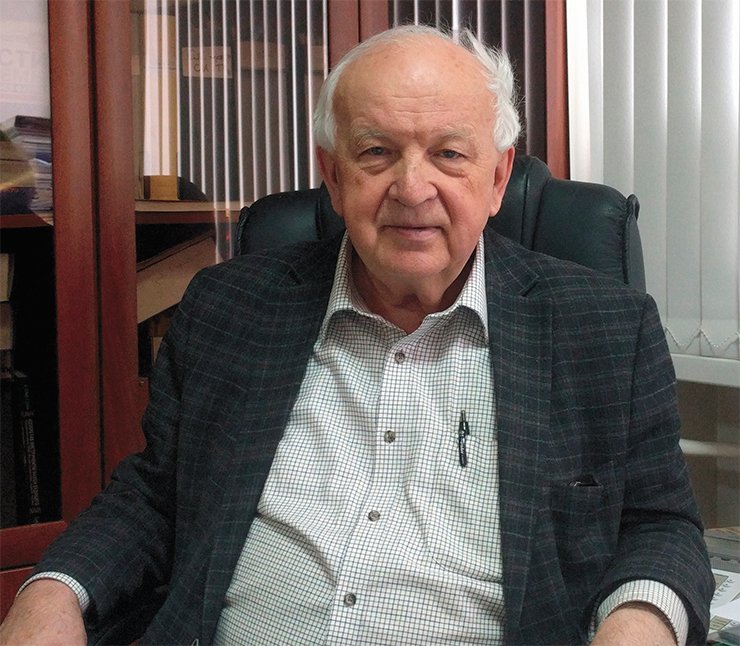
“The most dangerous thing for a ship is a calm sea. In this case, you can only move in tow. So, one should beware of calm sea only. Don’t be afraid of side and head winds: when they blow, you can always move forward towards your goal. Beware of a calm sea!”
In 1992 (maybe in 1990?), we launched a large classified project to design a free-electron laser (FEL). We worked on that project by resolution of the Central Committee of the Communist Party and the Soviet Government; the project also involved industrial plants. But then the year 1991 came down upon us, followed by 1992 and 1993… and the money was gone. By that time, the plants had made some “semi-finished” products for the facility (about 30 %). We had to complete the project on our own: using the institute’s resources and the money earned under foreign contracts. The first generation took place more than 10 years later, in 2003. Even with financial support from the government, the implementation of modern physical projects involving the development of large physical facilities normally takes about a decade (the construction works on the Large Hadron Collider lasted more than 15 years). Mössbauer began his work in 1956, discovered the effect in 1959, and in 1961, the scientist received the Nobel Prize. Science works out in different ways.
References
Baldin E. M. Excursion over the «State» of the Institute of Nuclear Physics // SCIENCE First Hand. 2006. V. 7. N. 2. P. 6—25.
Rogovsky Yu. A., Baldin E. M., Nikolaev I. B. et al. Excursion in the «State» of the Institute of Nuclear Physics: Where Particles Are Born // SCIENCE First Hand. 2006. V. 8. N. 3. P. 34—51.
Skrinsky A. N. Knights of the Round Table // SCIENCE First Hand. 2006. V. 7. N. 2. P. 26—37.
Zolotarev K. V., Piminov P. A. Synchrotron Radiation at the Institute of Nuclear Physics: Formula of Success // SCIENCE First Hand. 2015. V. 42. N. 3. P. 10—18.
This publication includes drawings by E. Bender


